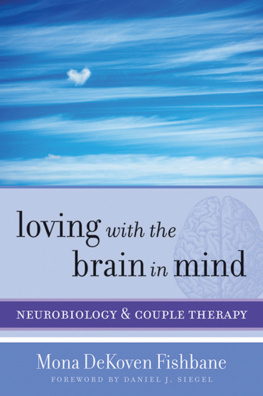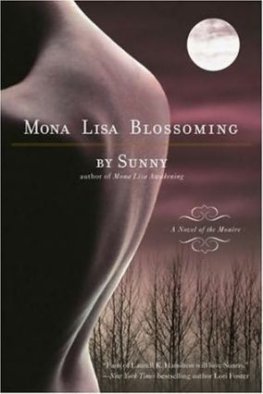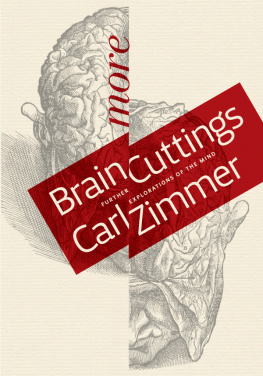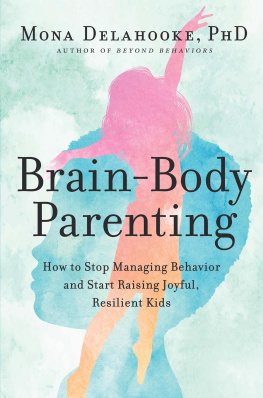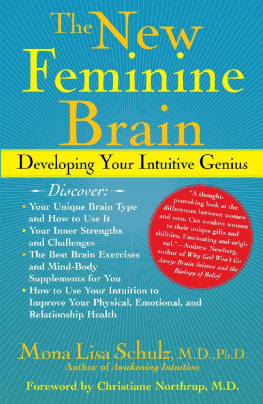Mona DeKoven Fishbane - Loving with the Brain in Mind
Here you can read online Mona DeKoven Fishbane - Loving with the Brain in Mind full text of the book (entire story) in english for free. Download pdf and epub, get meaning, cover and reviews about this ebook. publisher: W. W. Norton & Company, genre: Home and family. Description of the work, (preface) as well as reviews are available. Best literature library LitArk.com created for fans of good reading and offers a wide selection of genres:
Romance novel
Science fiction
Adventure
Detective
Science
History
Home and family
Prose
Art
Politics
Computer
Non-fiction
Religion
Business
Children
Humor
Choose a favorite category and find really read worthwhile books. Enjoy immersion in the world of imagination, feel the emotions of the characters or learn something new for yourself, make an fascinating discovery.
- Book:Loving with the Brain in Mind
- Author:
- Publisher:W. W. Norton & Company
- Genre:
- Rating:3 / 5
- Favourites:Add to favourites
- Your mark:
- 60
- 1
- 2
- 3
- 4
- 5
Loving with the Brain in Mind: summary, description and annotation
We offer to read an annotation, description, summary or preface (depends on what the author of the book "Loving with the Brain in Mind" wrote himself). If you haven't found the necessary information about the book — write in the comments, we will try to find it.
Loving with the Brain in Mind — read online for free the complete book (whole text) full work
Below is the text of the book, divided by pages. System saving the place of the last page read, allows you to conveniently read the book "Loving with the Brain in Mind" online for free, without having to search again every time where you left off. Put a bookmark, and you can go to the page where you finished reading at any time.
Font size:
Interval:
Bookmark:

LOVING WITH THE
BRAIN IN MIND
Neurobiology and
Couple Therapy
MONA DEKOVEN FISHBANE
Foreword by Daniel J. Siegel

W. W. Norton & Company
New York London

For Buzzy, with love

CONTENTS

How do we combine science with the practice of psychotherapy in a manner that is both rigorous and useful? In this masterful book, Mona Fishbane offers a fabulous example of how the synthesis of a broad range of scientific discoveries can be woven together seamlessly with clinical compassion and expertise to form an important way of approaching therapeutic work with couples. Written to be of benefit to clinicians both new and experienced in the practice of psychotherapy, Loving With the Brain in Mind provides you with a wealth of research findings and practical suggestions that will enrich your learning no matter your level of prior exposure to this field.
The book has two parts, each with unique contributions to the goal of making science accessible and practical for you as the reader. The first half provides a fascinating summary of a wide range of findings, from the neuroscience of gender differencesor lack of themto the science of trust within intimate relationships. Youll discover how our hormonal responses to hugs can shape how we perceive our partners, and youll learn how our patterns of interacting are shaped by our temperament and our attachment history. Using a single couple as an example in this part of the book, youll explore in depth how these scientific findings can illuminate the way the individuals interact and how personal history, culture, social context, and brain functioning shape their internal worlds and ways of connecting with each other.
In the second half of the book, our able guide Dr. Fishbane reveals the many ways in which the study of science informs her own clinical practice. Youll read about how practical applications of the science create novel approaches to her clients/patients, and how you can use these in your own clinical work. With this background, youll meet some new couples as well as further your understanding of the work with Erik and Lisa, the couple from the first half. By understanding some of the basics of neuroscience, youll see how providing neuroeducation for couples can help how they get along. For example, when individuals become stuck in what in interpersonal neurobiology we call nonintegrated low-road states, couples can become filled with implicit memories that shape how they are perceiving the actions and interpreting the intentions of their partners. Learning about these ways in which the more integrative prefrontal area can temporarily stop functioning to coordinate and balance the lower regions of the brain, and the body as a whole, can help people gain perspective on these disorienting and sometimes frightening states of mind that can affect any of us. Overall, these practical approaches allow people to strengthen their minds and bring more self-compassion and other-directed compassion into their lives through a deeper understanding of the neuroscience of living.
As a part of this Norton Professional Series on Interpersonal Neurobiology, Mona Fishbanes book fits in well with our efforts to weave science with practical clinical application. If you are familiar with our other books in the series, youll know that Lou Cozolinos book The Neuroscience of Relationships and Marion Solomon and Stan Tatkins book Love and War in Intimate Relationships have similar topics. As the founding editor of our series, let me make a clarification regarding how these three books are complementary. In The Neuroscience of Relationships , youll find an introduction to basic ideas about attachment and the brain and their implications for how people in therapy change. In Love and War in Intimate Relationships , youll see some very specific case examples that show how affect regulation and the notion of neural integration inform what a therapist does. Here in Loving With the Brain in Mind , youll find a couple therapists primer on a very different set of information. In this book youll find new and important knowledge about what we know about how couples function that has emerged from recent technological advances in brain scanning techniques as well as the reviews of cutting-edge discoveries in a range of fields. Youll learn how to apply, in a broad range of couples situations, these new findings to enrich your own clinical practice.
Our work in psychotherapy has been transformed by synthesizing science with the art of the therapeutic relationship and the mechanisms of change. Interpersonal neurobiology combines the various disciplines of science, from anthropology to neuroscience, to help create a consilient view of the human mind, healthy development, and the cultivation of well-being. Im proud to introduce you to this new contribution to our professional series and invite you to pour a cup of tea, sit back, and soak in the wisdom of the elegant and illuminating synthesis youre about to experience.
Daniel J. Siegel, MD
Founding Editor
Norton Series on Interpersonal Neurobiology

One morning some years ago as I was walking on the treadmill, I called my 86-year-old mother-in-law, Nana, to say helloa daily ritual we both cherished. She told me that she was reading a book she was sure I would love: Erik Kandels (2006) In Search of Memory . I was astonished. I was halfway through reading this book myself, and while it is part autobiography, it is also a serious presentation of Kandels neuroscience research that led to his receiving a Nobel Prizenot typical reading for an 86-year-old woman! I reflected on how Nana had transformed herself in the second half of her life into an intellectually curious, voracious student, who would rise at 4 A.M. to prepare for her classes, reading Talmud, Levinas, stoic philosophy, and neuroscience.
Kandels insights offer the key to Nanas transformation. His research showed how learning changes the brain. While his brain of choice was that of a sea slug (its simplicity was advantageous for his purposes), the implications of his findings apply to the human brain. Kandel and his colleagues have also identified the ways in which psychotherapy changes the brain. The mechanism for these changesand for Nanas transformationis neuroplasticity, the ability of the human brain to change in response to new learning. This is the basis for the change we seek in all psychotherapy, including couple therapy.
NEUROPLASTICITY
Neuroplasticity is the reason therapists are in business, and it is the basis for behavioral change; yet as recently as a decade ago, it was considered impossible in the adult human brain. Neuroplasticity was for kids. The assumption was that after young adulthood, there was no chance for new connections to develop between neurons (brain cells). It was basically downhill from our twenties, as we lost neurons and brain capacity into old age. But the discoveries of the last 10 years have provided a much more optimisticand revolutionaryview of adult brain function: Neuroplasticity (new connections between neurons) and even neurogenesis (the creation of new neurons from stem cells) can continue into old age. While many adults fall into rigidity and hardening of the categories (Cozolino, 2002), neuroscience gives us hope to support those who seek change and renewal in their lives.
Next pageFont size:
Interval:
Bookmark:
Similar books «Loving with the Brain in Mind»
Look at similar books to Loving with the Brain in Mind. We have selected literature similar in name and meaning in the hope of providing readers with more options to find new, interesting, not yet read works.
Discussion, reviews of the book Loving with the Brain in Mind and just readers' own opinions. Leave your comments, write what you think about the work, its meaning or the main characters. Specify what exactly you liked and what you didn't like, and why you think so.

